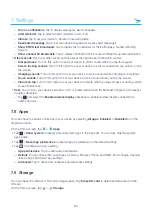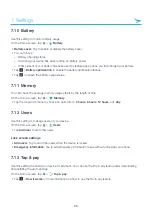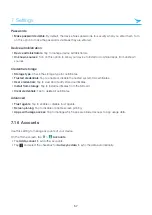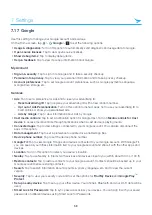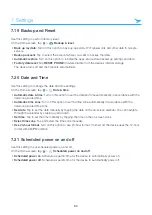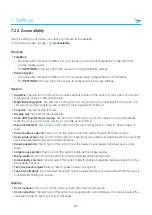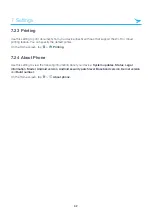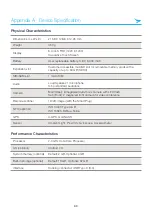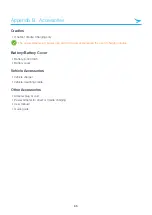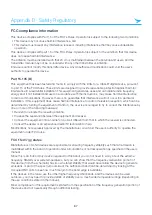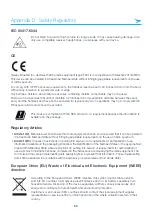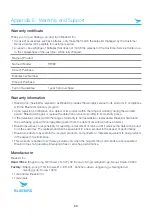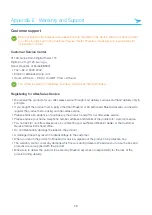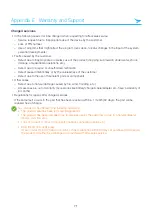
67
A p p e n d i x D S a f e t y
Regulatory
Appendix D Safety Regulatory
FCC compliance information
This device complies with Part 15 of the FCC’s Rules. Operation is subject to the following two Conditions:
• This device may not cause harmful interference, and
• This device must accept any interference received, including interference that may cause undesirable
operation.
This device complies with part 15 of the FCC Rules. Operation is subject to the condition that this device
does not cause harmful interference.
The antenna must be installed such that 20 cm is maintained between the antenna and users, and the
transmitter module may not be co-located with any other transmitter or antenna.
End users cannot modify this transmitter device. Any Unauthorized modification could void the user’s
authority to operate this device.
Part 15.105 (B)
This equipment has been tested and found to comply with the limits for a Class B digital device, pursuant
to part 15 of the FCC Rules. These limits are designed to provide reasonable protection against harmful
interference in a residential installation This equipment generates, uses and can radiate radio frequency
energy and, if not installed and used in accordance with the instructions, may cause harmful interference
to radio communications, However, there is no guarantee that interference will not occur in a particular
installation. If this equipment does cause harmful interference to radio or television reception, which can be
determined by turning the equipment off and on, the user is encouraged to try to correct the interference by
one or more of the following measures:
• Reorient or relocate the receiving antenna.
• Increase the separation between the equipment and receiver.
• Connect the equipment into an outlet on a circuit different from that to which the receiver is connected.
• Consult the dealer or an experienced radio/TV technician for help.
Modifications not expressly approved by the manufacturer could void the user’s authority to operate the
equipment under FCC rules.
FCC 15.407 (g) states
Manufacturers of U-NII devices are responsible for ensuring frequency stability such that an emission is
maintained within the band of operation under all conditions of normal operation as specified in the users
manual.
Since this is an Indoor Only device (required for this band) you do not need to worry about the extreme
frequency Stability over wide temperatures, but you can show that the frequency Generation portion of
this device (from the schematic) has its own stated stability that would never allow the device to generate
emissions or part of the spectrum outside of the authorized band (can be determined by looking at the
Occupied BW plots to see how much margin to the band edge is available).
If the devices in the future use the other higher frequency UNII bands, and the devices can be used
outdoors, you may need to provide details of stability over a much wider temperature range (depending on
the use conditions stated in the manual).
Most compliance for this requirement is stated from the specification of the frequency generation portion of
the device and not necessarily through additional testing.


